Scientific Facts
| Common Name | Hepatic tanager |
| Scientific Name | Piranga flava |
| Lifespan | Unknown |
| Size | 7.9 inches |
| Mass | 0.8 – 1.7 oz. |
| Habitat | Pine-oak and open pine forests |
| Range | South and Central United States, northern Argentina |
Information and Physical Description

Also commonly known as red tanager, the hepatic tanager is an American songbird, scientifically referred to as Piranga flava.
Back in time, the hepatic tanager was placed in the family Thraupidae (the tanager family). However, up-to-date, the red tanager, as well as other members of the genus Piranga, are classified in the family Cardinalidae (the cardinal family), as the species vocalizations and plumage are alike the vocalizations and plumage of other members of the Cardinalidae family.
Currently, there are three groups of Piranga subspecies, and these groups may also be separate species. These groups may be separate species because of recent evidence-based on molecular genetics studies.
The red tanager (Piranga flava, Lowland hepatic tanager) is part of the flava group and is known to reside in South America’s open woods.
The hepatic tanager (Piranga hepatica, Hepatic tanager), belongs to the hepatica group. This species breeds from Nicaragua in the north, and is partially migratory, inhabiting pine-oak and pine forests.
The tooth-billed tanager (Piranga lutea, Highland hepatic tanager) is part of the lutea group and is found across the highland forest edges of Costa Rica throughout western and northern South America.
Belonging to the order Passeriformes, the types of tanagers include the scarlet tanager, the stripe-headed tanager, the western tanager, the summer tanager, and the hepatic tanager.

Scarlet tanager (Piranga olivacea) – Image Source
Each fall, the male Scarlet Tanager is to change his impressively beautiful red and black plumage, being the only tanager species known to undergo seasonal changes! The plumage changes into more of a drab olive green, quite the same as that of the female scarlet tanager.
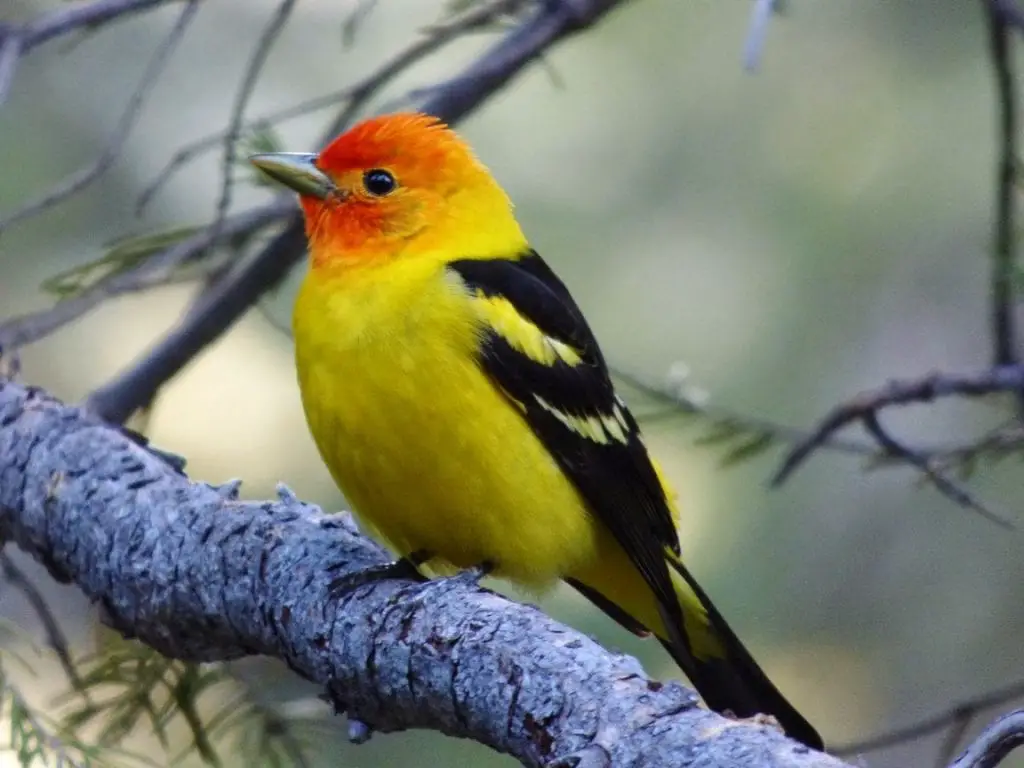
Western tanager (Piranga ludoviciana) – Image Source
The male western tanager is characterized by a vividly bright yellow coloration. Meanwhile, the wings, as well as the tail, are colored in black, making the yellow nuances stand up beautifully, as if in a frame. Only the face is colored in red. Female western tanagers have distinct whitish wing bars.

Stripe-headed tanager, aka Western spindalis (Spindalis zena) – Image Source
Male stripe-headed tanagers are brightly colored, living up true to their name thanks to the head being striped horizontally with white and black, while the belly’s remainder is colored in light grey. Females also possess similar markings on the head, but the color of these markings is more washed out to a medium grey tint. There are two color variations of stripe-headed tanagers, namely black-backed and green-backed.
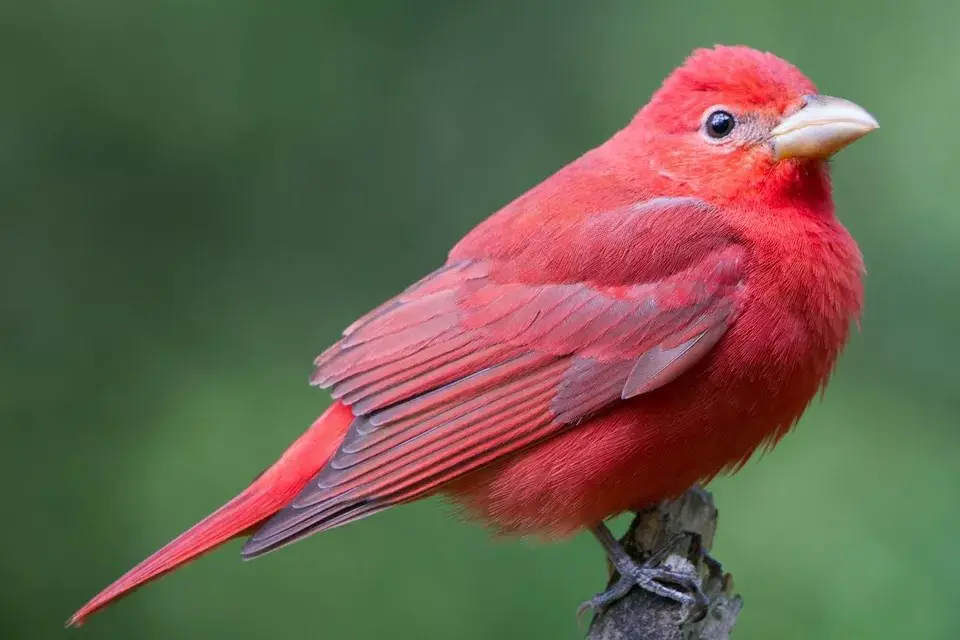
Summer tanager (Piranga rubra) – Image Source
Both male and female Summer tanagers are known to possess thick bills that end with relatively blunt tips. Males are colored in strawberry red, and they are further “equipped” with a wash on their primary flight feathers, ranging from black to blacking-gray in color, with the tail tip and the wings having a faint gray wash. Overall, females are colored in yellow-orange to mustard yellow, with the upper part of the body being colored in nuances of olive green.
The Hepatic tanager is characterized by a solidly built, medium-sized body, as it is smaller than the American Robin, yet larger than the Hermit Thrush. These birds are “equipped” with heavy, short bills, relatively long wings and tails, as well as strong feet and legs.
With marked sexual dichromatism, there are visible differences in the physical appearance of male and female hepatic tanagers.
Piranga flava males’ coloration is grayish brick-red on the upper part of the body, while below, it is strictly reddish. The ear patch is colored in grayish.
Adult Piranga flava females are colored in olive-yellow tones on the above, exhibiting yellowish nuances bellow. The ear patch is dusky.
On the other hand, juveniles are colored in grayish olive tones above, they are overall lightly streaked, and buffy below. The appearance of immature hepatic tanagers is quite similar to that of adult females, with the exception that the immature ones are somewhat duller.
Regardless of age, all hepatic tanagers are known to possess dark colored legs and bills. With dusty cheeks, gray flanks, and a dark eye streak, hepatic tanagers’ brightest color can be noticed on the throat and on the forehead.
As compared with other Piranga tanagers, the members of the northern group are visibly stockier and larger, with stout bills and relatively short tails.
Lifespan
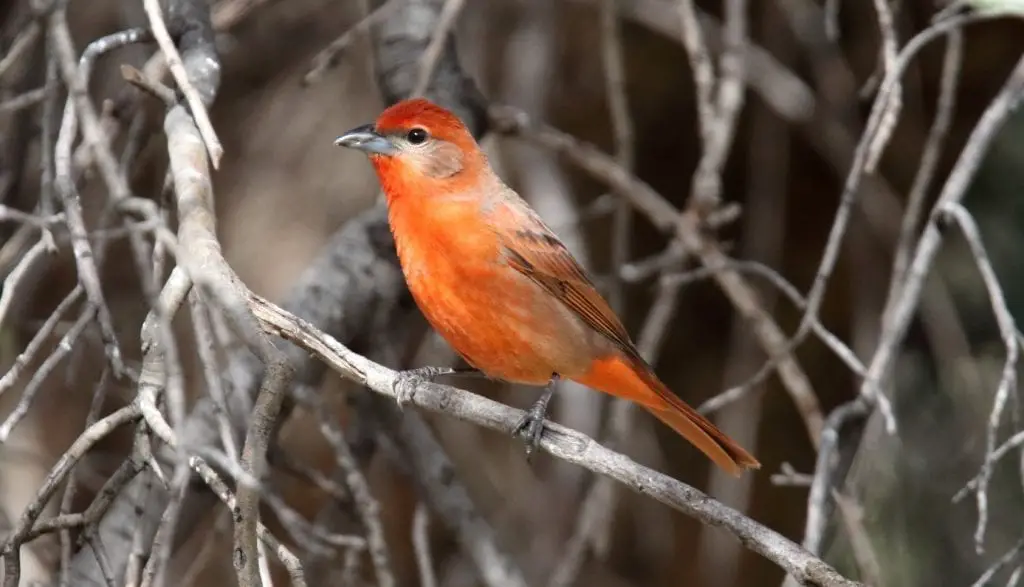
Unfortunately, only rather limited information on very basic geographic variation, as well as basic natural history about hepatic tanagers is available up-to-data. Thus, reliable information about the lifespan of Piranga flava remains unknown at the time of this writing.
However, according to the IUCN, the generation length of hepatic tanagers is estimated at 4.1 years. Also, there is evidence about another type of tanager, namely the scarlet tanager, having been recorded to live up to 10 years.
Ecosystem and Habitat
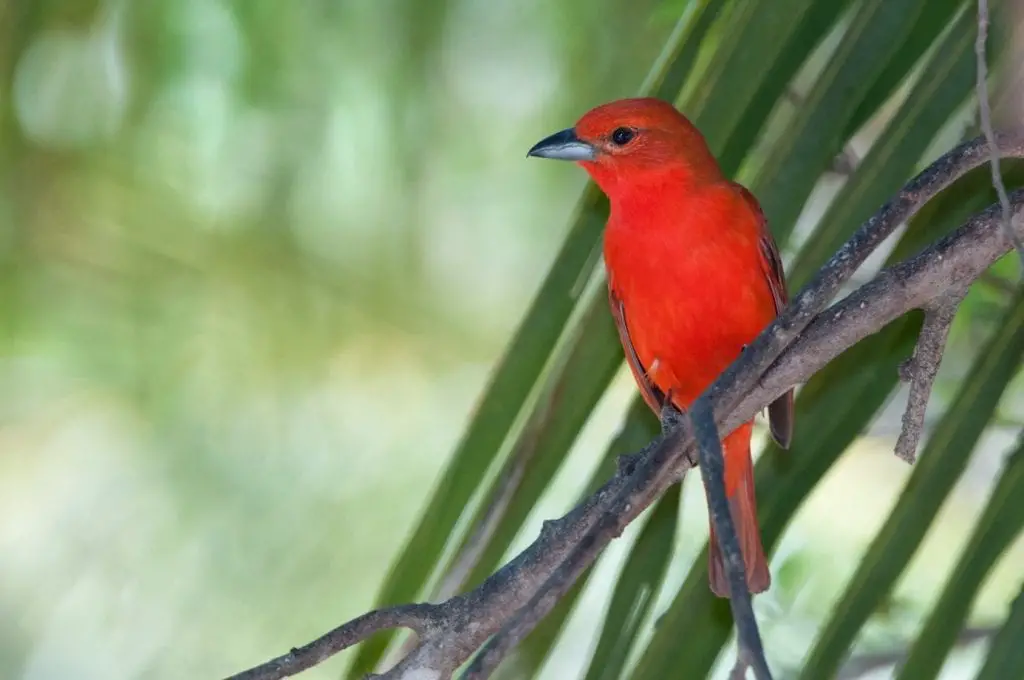
Being the most widely distributed Piranga tanagers, hepatic tanagers are known to naturally occur in much of Central, as well as South America, and are also common in the southwestern parts of the United States. Ever since the 1960s, hepatic tanagers have gradually expanded their natural range northward, reaching the northern parts of Argentina.
Distributed over Uruguay, Bolivia, Paraguay, French Guiana, Brazil, Suriname, and Guyana, hepatic tanagers are polytypic species, with the term “polytypic” indicating the separate description of each one of the distinct populations, rather than just a single common description for the entire species.
Hepatic tanagers nest in the western mountains’ pine-oak and open pine forests. They also spent the winter in similar habitats, with migrants known to stop over in wooded stream corridors, desert oases, as well as in woodlands.
P. f. Flava, the nominate subspecies, is found in central and northern Argentina, and Uruguay. The P.f. rosacea subspecies is native to eastern Bolivia.
The P. f. macconnelli subspecies occupies French Guiana, northern Brazil, and southern Guyana, while the P.f. saira subspecies is distributed in southern and eastern Brazil.
Hepatic tanagers are described as species with low forest dependence, as they are distributed over altitudes of relatively low elevations ranging between 600 and up to 2050 meters above sea level.
Apart from occupying natural terrestrial habitats, red tanagers are also known to occupy artificial ecosystems, in particular, heavily degraded forests.
Moist tropical and subtropical lowland forests, mangrove forests, dry savanna, deciduous forests, as well as moist tropical and subtropical montane forests make up for these amazing birds’ natural ecosystems and habitats.
Behavior

In a nutshell, the behavior of hepatic tanagers fits into the phrase “foliage cleaners.”
These birds nest in trees. Even though Northern populations are migratory, a few individuals are known to often remain in northern breeding areas during the winter season, too.
As banding data that can help with tracking the migratory movements and migration routes of hepatic tanagers are virtually nonexistent, all that experts know up-to-date about the migration behavior of these unique birds is that they migrate in small flocks, possibly following river valleys.
The species is to forage by slowly hopping slowly upward through shrubs and trees and shrubs, searching for suitable food. Sometimes, it is in flight when hepatic tanagers may pursue various insects.
Piranga flava species are commonly found in either small groups or pairs, and researchers believe that these groups/pairs are most probably family groups. Following breeding, the pairs and their young are suggested to most probably remain together, and even possibly to migrate together, sharing their migration journey by joining other small groups of tanagers.
Parental care is shared between females and males, including incubation, as well as chick-rearing duties. In fact, males have been observed to bring food to females not only during eggs incubation but also during courtship, even though no particular courtship display is known up-to-date.
Cool Facts
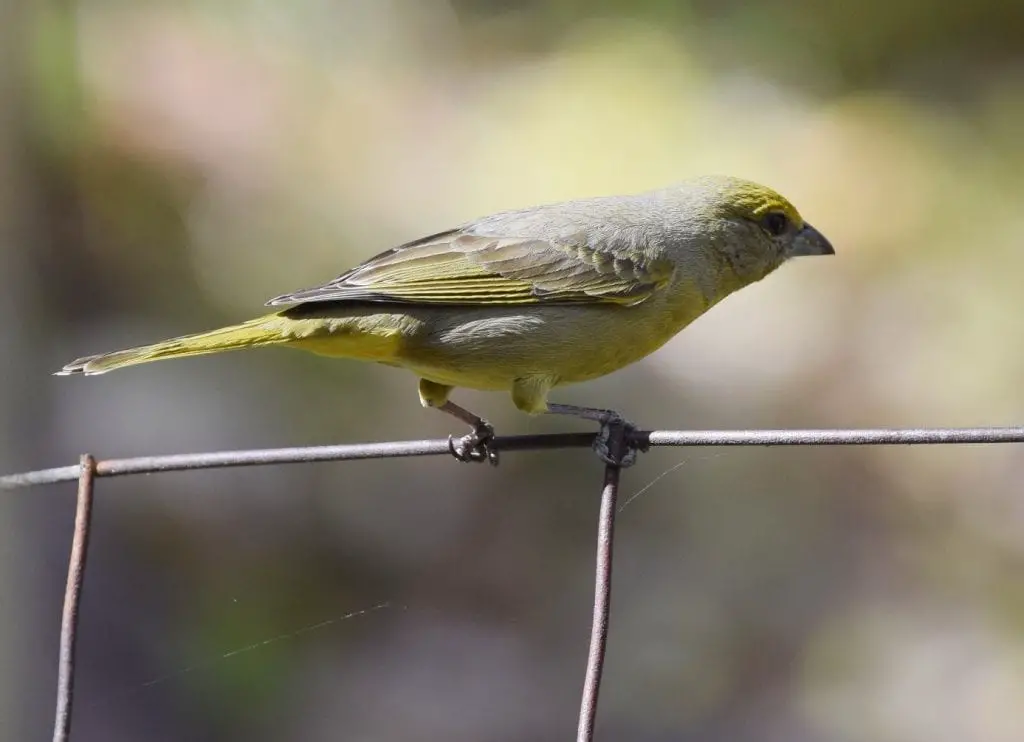
- The hepatic tanager’s average wingspan is estimated at 12.5 inches.
- There are over 300 species of tanagers found in South and Central America alike. However, despite sharing a name, these tanagers are actually unrelated to the total of 4 species found in Canada and in the U.S., namely the Scarlet tanager, the Summer tanager, the Hepatic tanager, and the Western tanager, since these 4 species are in the Cardinalidae family, along with rose-breasted grosbeaks, black-headed grosbeak, and northern cardinals, among other species of birds.
- The hepatic tanager’s song is considered quite similar to the black-headed grosbeak’s song, and it is much clearer than the song of Thraupidae tanagers. Piranga flava’s call is described as a dry, low chup, often compared with that of the hermit thrush. Meanwhile, the flight call is a rising, husky weet.
- Hepatic tanagers are named for the distinct reddish coloration of males’ upperparts, with adjective “hepatic” referring to the liver, while the scientific name for this species – “flava” – is a reference to the females’ yellow plumage.
- Up-to-date, the hepatic tanager remains one of the very little studied birds globally. As of 2002, only as few as a total of 106 hepatic tanagers have been successfully banded. However, only one single banded bird had ever been recorded; thus, much about these incredible songbirds remaining embraced in mystery.
- On the one hand, the hepatic tanager has the most restricted range when compared to all of the 4 species of Piranga tanagers found in the United States. On the other hand, the hepatic tanager is the most widely spread member of the genus, breeding all the way from the southwestern United States to Argentina.
- Despite being widely distributed across certain areas of New Mexico and Arizona, many aspects regarding the hepatic tanager’s biology are unknown, including re-nesting, natal down description, vocal repertoire, incubation period, quantitative habitat information. However, the lack of basic information about the hepatic tanager offers the wonderful potential for the future study of the life history of this amazing bird species.
- The hepatic tanager is known as Piranga orangé in France, Tieflandkardinal in Germany, and Piranga bermeja in Spain.
- In Argentina, the song of the hepatic tanager is described as very melodious, yet with very little variation, and in particular, it is described as a repeated “tschip-tschurr.”
- Male hepatic tanagers have a curious way of defending the territories they establish in spring (one single territory is estimated to span across about 3 acres): with songs! Males are to sing, moving from one perch to another, and will also defend their territories by posturing, scolding, as well as chasing the potential unwanted intruders away.
Reproduction

The breeding season of Hepatic tanagers found in Brazil occurs in November, while the breeding season of these species found in Paraguay occurs in October.
Hepatic tanagers are strictly monogamous. Also, they nest solitarily.
Within their natural range in the United States and through Central America, these birds breed mostly in Quercus (pine-oak) and Pinus (open pine) forests, as well as in other similar habitats, located at moderately high altitudes, while moving to lower elevations in the wintertime.
The nest, resembling a flat, shallow cup, consists of plant fibers, twigs, and grasses. Furthermore, it is lined with other soft materials, like moss, flowers, hairs, and pine needles.
The solitary nest is placed in the fork, nearby the very end of a suitable tree branch that stands horizontally, from 5 and up to 15 meters above the ground.
Males only provide limited help to females when it comes to building the nest.
The nest is to accommodate a total of three to five eggs, colored in blue-green, and spotted with brown or markings, especially around the egg’s large end. The female hepatic tanager is to incubate the eggs for a period of approximately two weeks (13 – 14 days).
Hatchlings are helpless and heavily rely on parental care in order to survive.
Despite the common knowledge that these species are generally resident, non-migratory birds, there is evidence suggesting that in the southern range, breeding populations actually make northward movements, only short-distance, though. It is within their natural range where hepatic tanagers may make local movements for the purpose of breeding and feeding.
Following breeding, juveniles are believed to potentially disperse, establishing in new locations across their natural range.
Food and Diet
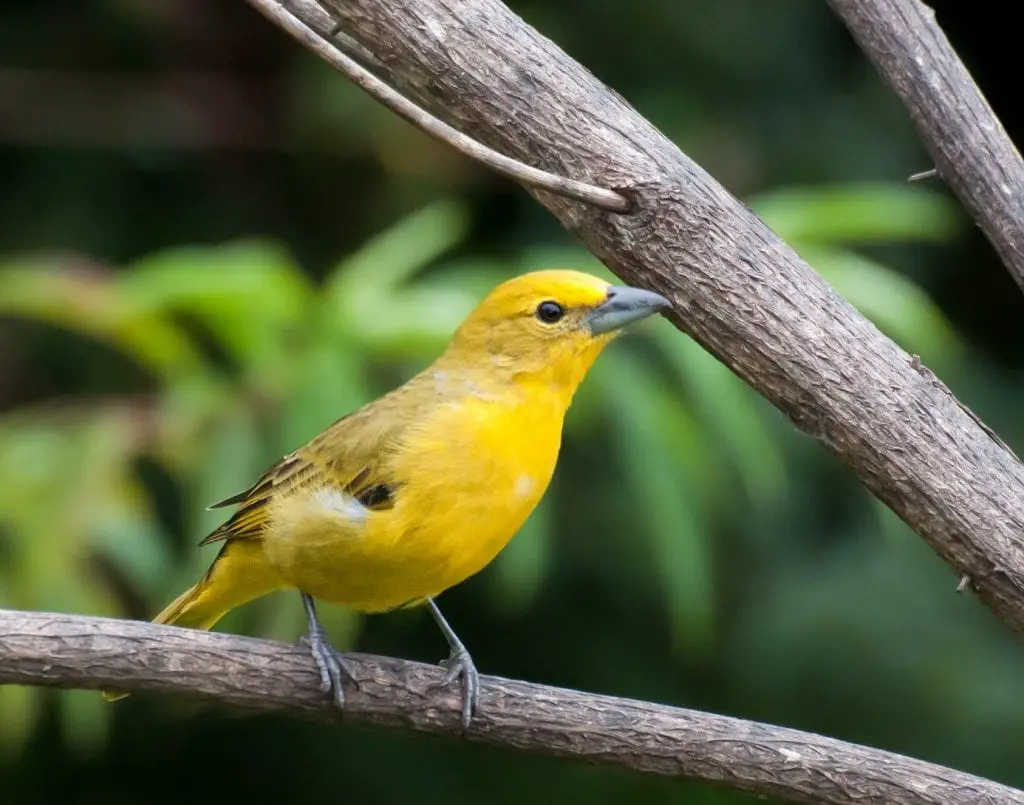
Hepatic tanagers’ diet mainly consists of various insects, with a variety of arthropod prey, several examples being caterpillars and spiders (Araneae), moths, larval insects, ants, grasshoppers.
A variety of fruits, including but not limited to berries and figs, are also a primary source of food in the Piranga flava species’ diet.
These birds are known to mostly forage for insects in the lower and up to the middle canopy, only occasionally descending to the forest floor where they can feed on fallen berries and insects.
In most cases, foraging starts low in the tree, with the hepatic tanager hopping along branches, while patiently engaged in the search for well-hidden insects. The tanager is to proceed to move very methodically upward the tree up until the point it finally reaches the crown.
Interestingly, this species is known to often feed in groups or pairs.
Bees and wasps seem to be among the favorite “delicacies” hepatic tanagers enjoy to feast on.
While they tend to glean prey from the branches, leaves, and stems in the upper foliage of tall trees for most of the time, hepatic tanagers are also capable of catching insects in flight.
When looking for food, apart from these birds known move methodically and slowly, different individuals have been reported to use different strategies for catching food.
Even though the northern form of hepatic tanager is known to largely feed on some fruit, spiders, and insects, the hepatic tanager forms distributed across Mexico have been found to feed on nectar, too. Meanwhile, the populations of hepatic tanagers occupying south of Oaxaca have been observed to follow swarms of army ants as a delicious food source.
For dedicated bird care enthusiasts who want to attract hepatic tanagers by providing these amazing living creatures with high-quality food items, maintaining insect traps is highly recommended, as this is one of the best ways to maintain a proper, natural diet.
Hepatic tanagers will also gladly take various combinations of fruit, such as papaya, kiwi, peached, pear, bananas, oranges, and that’s just to name a few. Fruits can be lightly coated with high-quality insectivorous bird food.
Also, these birds are known to consume small amounts of fruit, such as wild grape and wild cherry, among others, as well as small seeds, various wildflowers, and nonetheless, nectar, so any of these can be provided, too.
Mealworms, flies, moths, crickets, beetles, wax worms, spiders, and sowbugs, among other invertebrates, should be also offered on a daily basis in the feeders/birdhouses.
Housing

As a rule of thumb, there are no birdhouse models that have been built specifically for Hepatic tanagers up-to-date.
However, these birds will adapt to just about any kind of appropriately designed, large indoor cages, yet the best away to allow these birds to live up to their fullest potential is to provide them with an outdoor aviary.
An outdoor aviary will not only be of best advantage to the birds themselves, but it will also be of best advantage to the caregiver since it will allow for the breeding behavior, as well as the ceaseless, curious quest for insects, to be contemplated and fully enjoyed.
In any case, the shelter should be dry and comfortable, with temperatures being kept as close to the temperatures in the natural range of these birds as possible.
When it comes to the creation of their nest, there are certain specifications available.
- The nest must be situated in a deciduous tree (preferably conifer pine). These birds are known to nest in Jeffrey pine, Ponderosa pine, white fir, pinyon pine, and sometimes in mesquite, willow, maple, sycamore, and walnut.
- The nest must be situated from 15 to 50 feet above the ground.
- The nest should be made out of natural materials, preferably the materials used for nest creation by these birds in the wild, namely plant fibers, twigs, grasses, as well as some soft material like leaf clutter.
- The nest must be carefully mounted on a suitable horizontal branch, with the best place to mount a nest being at the very junction of two, three, or more smaller branches originating from a main horizontal branch.
- The nest has to be situated in a shady area, for instance, where several leaves almost fully shade the nest, yet still leaving some little space for sunlight to squeeze through.
- From the ground below, nests must have an unobstructed, clear view. The unobstructed view is extremely important to allow the birds to fly with ease. Also, open flyways from adjoining trees to nest must be present.
Possible Health Issues

- Iron storage disease is common in tanagers, as well as in many other bird species, such as starlings, lorikeets, hornbills, and birds of paradise, to name a few. In birds, the most reliable testing modalities for investigating this diseases include magnetic resonance imaging (MRI), histopathology, and liver biopsy for liver iron determination rather than blood parameters.
- As with many other bird species, the parasitic disease may also occur with hepatic tanagers, yet in many cases, these diseases do not really show any clinical signs, so the best way to tell for sure whether the bird is affected by parasites is to contact a qualified veterinarian.
- Injuries may occur, too, and in such cases, a check-up by a qualified vet is a must, so that the bird can be treated in a proper, effective, and timely manner. Do not attempt to treat or otherwise take care of an injured/sick hepatic tanager by yourself, as this is a reserved territory of authorized, qualified, legal vets and wildlife rehabilitators.
- Last but not least, stress can significantly negatively compromise the health and well-being of hepatic tanagers. This is yet another reason to never attempt self-treating these amazing birds but to always immediately contact wildlife rescue members.
Availability – Where to Get One?
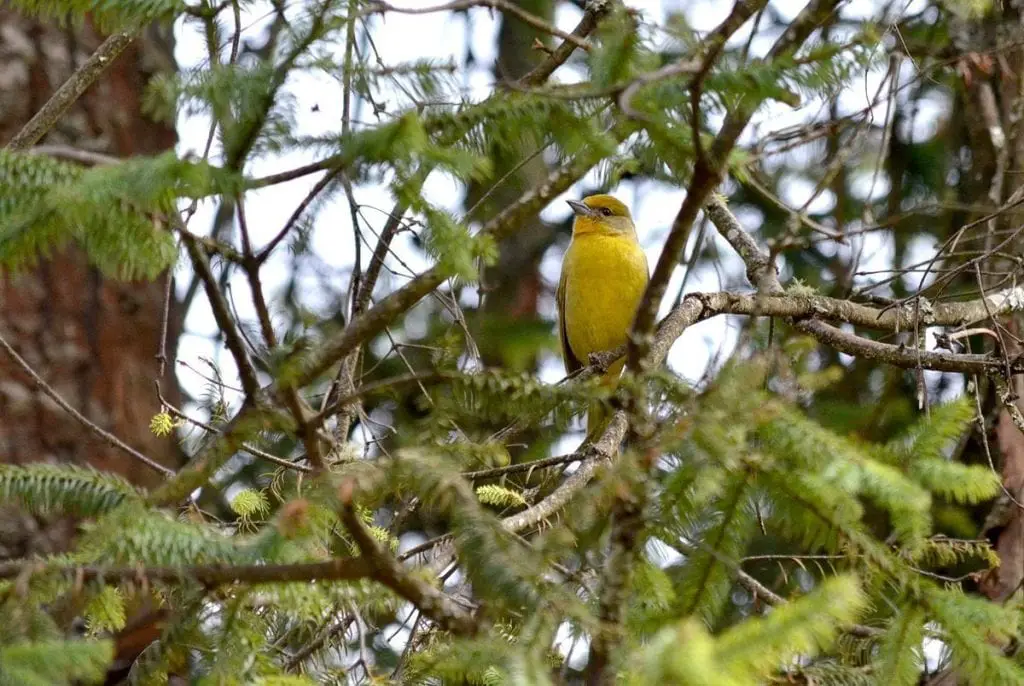
While even the behavior of the northern populations of hepatic tanagers remains remarkably unknown up-to-date, these birds are not widely kept as pets. In fact, as with most wild birds, it is illegal to keep them as pets, unless the keeper is to be under the direction of a person who has been authorized to take care of hepatic tanagers (and/or other native wild birds).
It is possible, though, to simply admire these beautiful creatures in the wild by looking for hepatic tanagers throughout their natural range.
In New Mexico and Arizona, the highest probability of spotting these extraordinary birds is during the spring and summer season, when males are to keep singing until late morning. From late summer through autumn, pairs of hepatic tanagers, as well as they are young, are to call back and forth.
Although the vivid, bright colors of Hepatic tanagers make them quite clearly visible, it might be the case that one would have to search for a little bit before the bird can be noticed. These birds mostly tend to feed in the trees’ interior, so this is where the attention of the contemplators should be focused.
How to Care for a Hepatic Tanager?
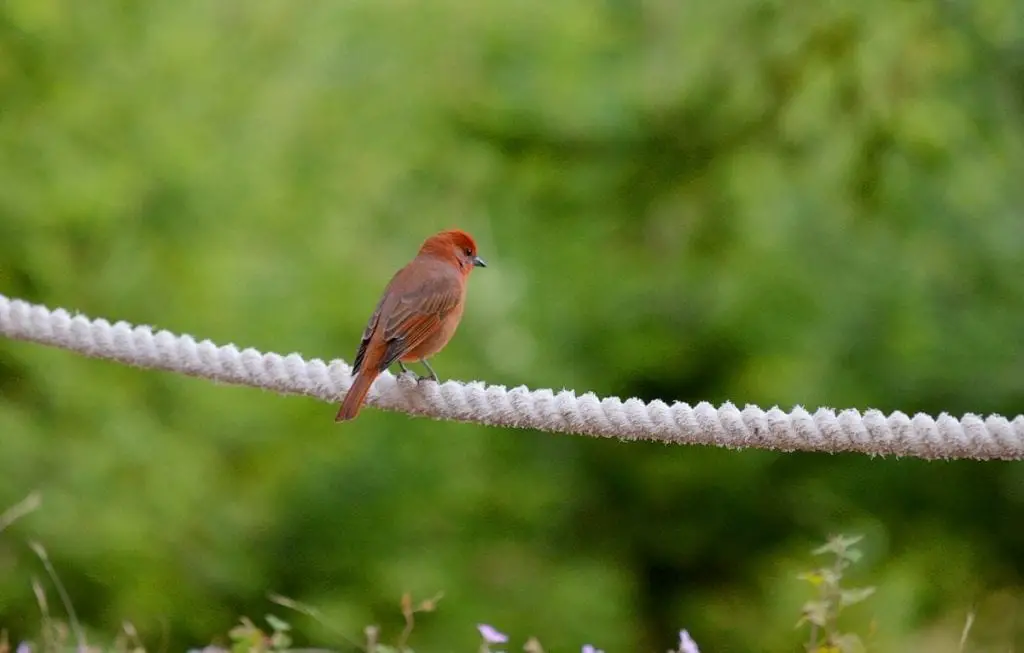
First and foremost, to take the best care of a hepatic tanager, one needs to acknowledge and remember that these birds are wild creatures. They must never be disrespectfully confined, forced, or stressed in any way.
Hepatic tanagers that are properly taken care of have the reputation of being very alert, active, curious birds. Caregivers who get to establish a strong bond with the bird may even teach it to take food from their hands.
To take the best care of hepatic tanagers in the wild, we need to acknowledge that even though these birds are not considered threatened with extinction as of now, habitat loss has greatly limited or reduced hepatic tanager populations in some parts of these birds natural range. Habitat loss is due to fire, timber extraction, overgrazing, and drought. Also, deforestation in the wintering range is suggested to most probably have a negative impact on these incredible living creatures.
By choosing to be well-informed on the lifestyle decisions we make every single day, and by choosing to embrace an environmental-friendly mindset and lifestyle, each of us is fully capable of helping the populations of hepatic tanagers in the wild to remain steady and healthy, making up for the crucial biodiversity on the planet for generations to come.
FAQs
How Many Species of Tanagers Are there?
According to some classifications, the Thraupidae family consists of more than 400 species; however, other classifications assign less than a total of 300 species to the same group of birds. Most tanager species, including but not limited to Paringa flava, are known to have short necks and a medium-sized body, but the hepatic tanager actually belongs to the family Cardinalidae after being reclassified from the Thraupidae family.
What Does a Hepatic Tanager Look Like?
The hepatic tanager is a medium-sized bird with a solid body and a short, yet heavy, dark-colored bill. The upper body of male hepatic tanagers is colored in grayish brick-red, with reddish below, while females are colored in olive-yellow, with yellowish below.
What Do Hepatic Tanagers Eat?
Hepatic tanagers are insectivorous birds that eat a variety of insects, such as larval insects, spiders, grasshoppers, moths, bees, and wasps. These birds also feed on a variety of fruits, including but not limited to berries.
Do Hepatic Tanagers Migrate?
Even though sufficient, in-depth data regarding the migration habits of hepatic tanagers is still lacking, it is widely believed that these birds are resident, non-migratory and that they only make local movements for breeding and feeding purposes. Interestingly, there is some evidence that points out to the southern populations of hepatic tanagers possibly making short-distance movements to the north.
Where Do Hepatic Tanagers Nest?
Hepatic tanagers nest up in the trees in their natural habitat, which mostly encompasses open pine and pine-oak woodlands. Hepatic tanagers’ nests are solitary, shallow cup-like, positioned on a suitable horizontal branch, and are made out of various twigs and plant fibers, among other natural materials.
How Many Eggs Do Hepatic Tanagers Lay?
Hepatic tanagers are known to lay between three-five eggs. The eggs are colored in bluish-green and are further speckled with purple or brown.
How to Attract Hepatic Tanagers?
There is little information available on how to attract hepatic tanagers, apart from possibly providing these birds some of their favorite food items, including various insects, as well as fruit, waiting for these birds to approach as to get a better glimpse of their extraordinary appearance and beauty.
Are Hepatic Tanagers Endangered?
Probably because of the secure nature making up for much of the hepatic tanagers’ breeding habitat within the United States, these birds are listed as Least Concern by the IUCN, as their populations in the wild are considered relatively stable as of now. In fact, according to qualitative information, hepatic tanagers have managed to expand their range in recent years, with an estimated 1.3% rise per year ever since 1968 to 2015.


